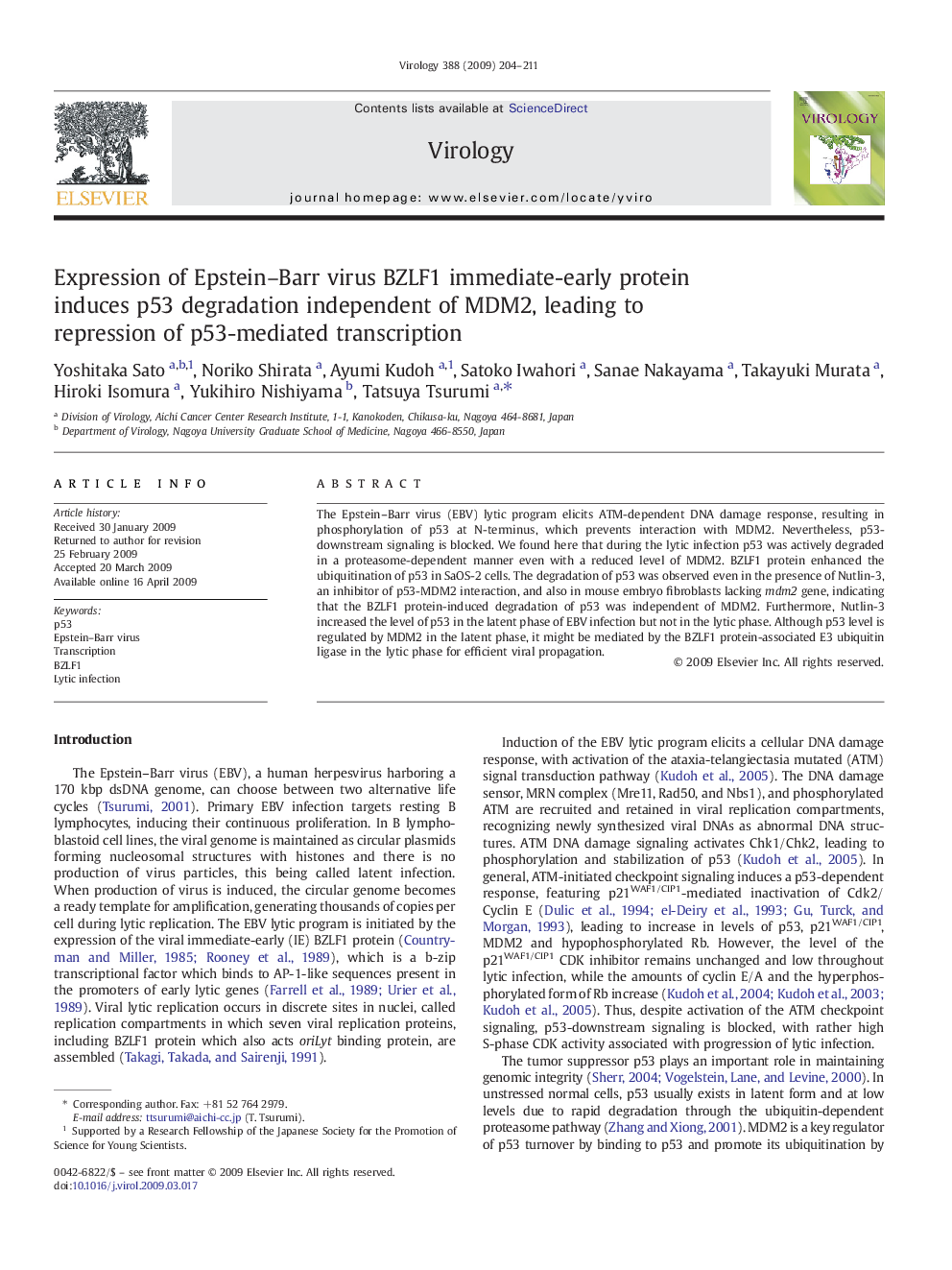| Article ID | Journal | Published Year | Pages | File Type |
|---|---|---|---|---|
| 3425375 | Virology | 2009 | 8 Pages |
The Epstein–Barr virus (EBV) lytic program elicits ATM-dependent DNA damage response, resulting in phosphorylation of p53 at N-terminus, which prevents interaction with MDM2. Nevertheless, p53-downstream signaling is blocked. We found here that during the lytic infection p53 was actively degraded in a proteasome-dependent manner even with a reduced level of MDM2. BZLF1 protein enhanced the ubiquitination of p53 in SaOS-2 cells. The degradation of p53 was observed even in the presence of Nutlin-3, an inhibitor of p53-MDM2 interaction, and also in mouse embryo fibroblasts lacking mdm2 gene, indicating that the BZLF1 protein-induced degradation of p53 was independent of MDM2. Furthermore, Nutlin-3 increased the level of p53 in the latent phase of EBV infection but not in the lytic phase. Although p53 level is regulated by MDM2 in the latent phase, it might be mediated by the BZLF1 protein-associated E3 ubiquitin ligase in the lytic phase for efficient viral propagation.
